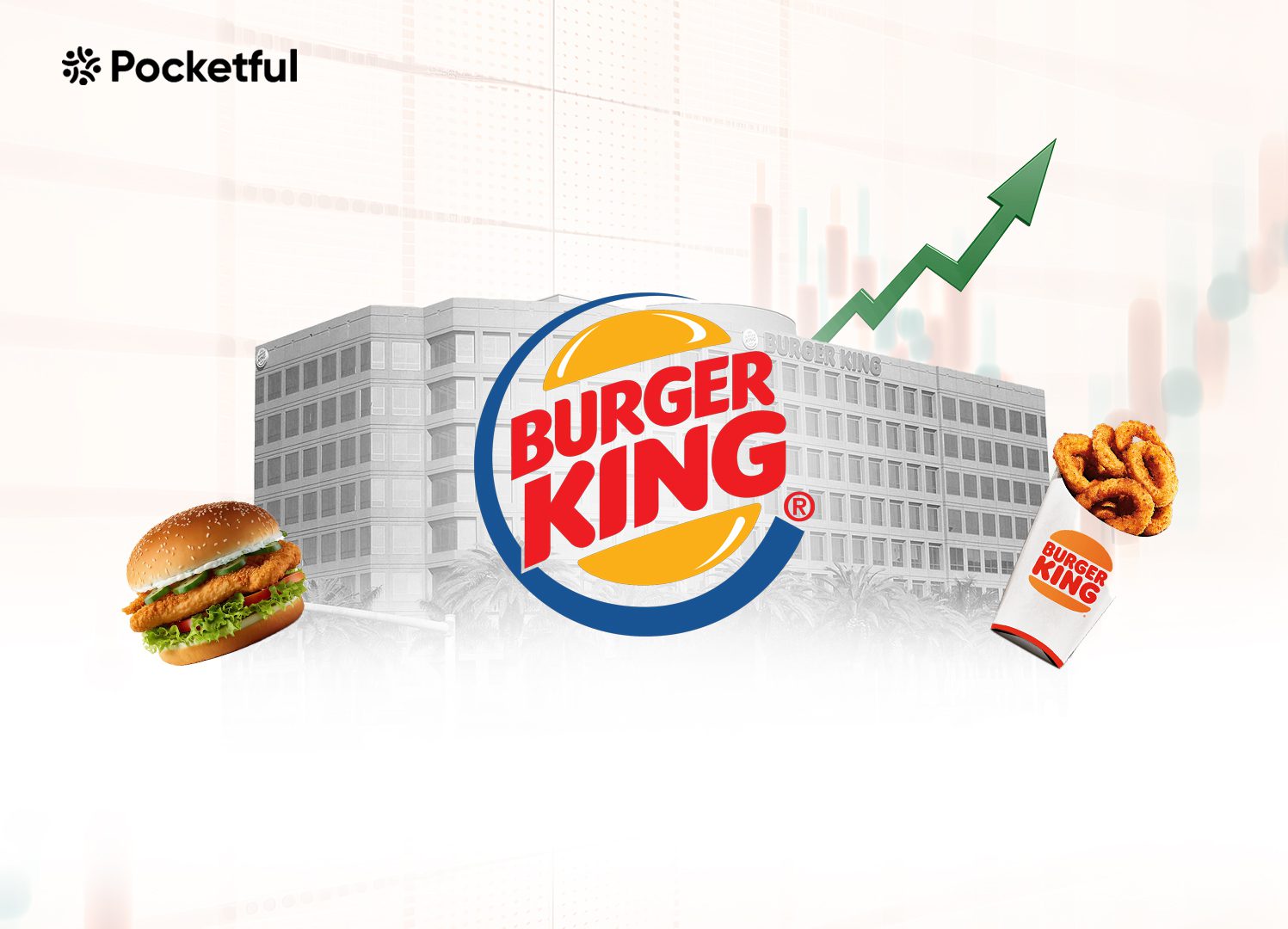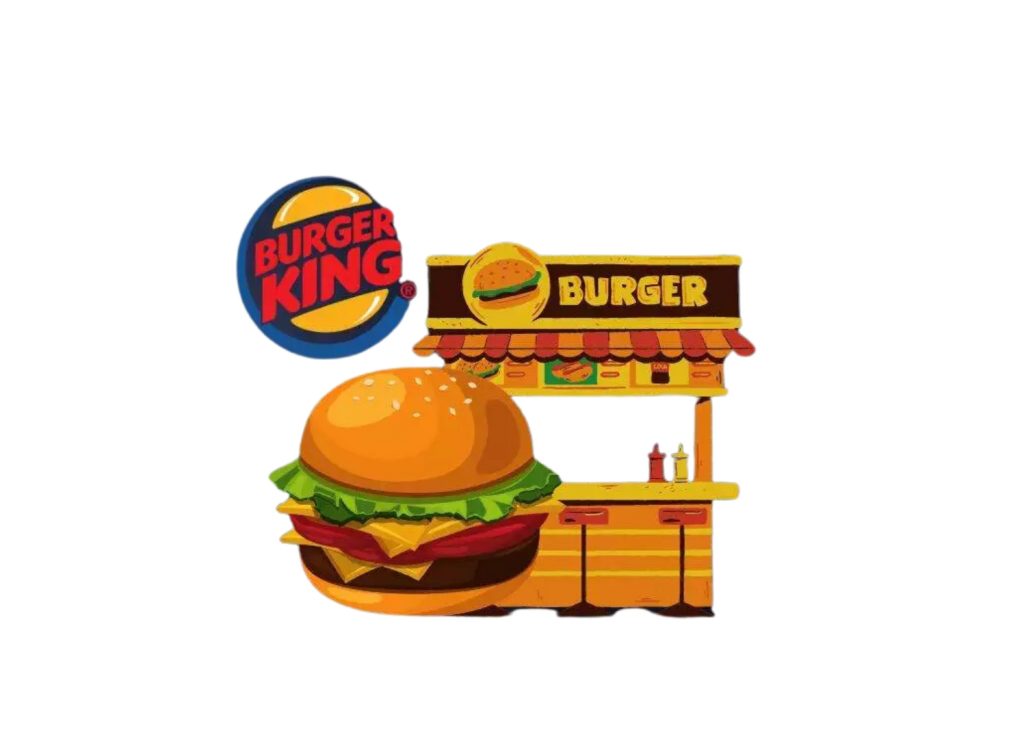| Type | Description | Contributor | Date |
|---|---|---|---|
| Post created | Pocketful Team | Oct-08-24 | |
| Add new links | Nisha | Apr-11-25 |

- Blog
- case study on burger king marketing strategy
Burger King Case Study: Marketing Strategies, Innovations, and Global Success

Burger King, one of the world’s most iconic fast-food chains, has come a long way from a single Miami restaurant to become a global brand known for its flame-grilled burgers and customer centric approach. Over the years, Burger King has been able to differentiate itself from rivals like McDonald’s while adapting to changing consumer preferences.
This Burger King case study offers an in-depth look at the marketing strategies and decisions behind the fast food giant’s success. This case study examines the key aspects of the business, such as marketing campaigns, product innovation, competitive positioning, and global expansion.
Burger King: An Overview
Burger King is one of the most iconic fast food chains in the world. It was founded in 1954 by Keith G. Cramer and Matthew Burns. Originally, it was named as “Insta Burger King” as the restaurant was inspired by the founder’s visit to the original McDonald’s store in San Bernardino, California. They purchased the rights to the two innovative pieces of equipment, known as the “Insta-Machines” and “Insta-Broilers.” These machines were capable of cooking multiple burgers at once, which became the cornerstone of their operations. They had the vision to create their version of a fast food restaurant with a focus on flame grilled burgers, offering a unique flavor as compared to fried burgers.
The company experienced financial difficulties in 1959 and was purchased by James McLamore and David R. Edgerton, the franchise owners of the Miami and Florida branches of the Insta Burger King. McLamore and Edgerton decided to drop “Insta” from the nаme аnd rebranding the chain as simply “Burger King’.”
In 1957, Burger King introduced its signature product known as “The Whopper,” which remains the chain’s flagship item. The Whopper’s introduction helped cement Burger King’s reputation as a major player in the fast food industry.
Through expansions and acquisitions, Burger King’s market size grew, which transformed it into a global brand. Today, it operates in over 100 countries, known for its flame grilled burgers and iconic “Have It Your Way” slogan, which emphasizes customer choice and personalization.
Read Also: Case Study on Starbucks Marketing Strategy
Marketing Strategies of Burger King

Let’s have a look at burger king marketing strategy, as they played a pivotal role in establishing the brand as one of the top fast food chains globally. Burger King is known for its innovative and bold approach. Burger King has consistently applied creative marketing strategies to differentiate itself from competitors, particularly its main rival, McDonald’s. A key element of its strategy has been the emphasis on flame-grilled burgers, particularly the iconic Whopper and positioning the brand as a premium alternative to fried burgers. Key elements of its marketing strategy include:
- Moldy Whopper Campaign: One of the Burger King’s marketing strategies is its willingness to accept controversy and humor as seen in campaigns like “The Moldy Whopper,” which showcased that how its burgers is free of artificial preservatives and have naturally decomposed over time. This unconventional campaign helped draw the public’s attention to the company’s commitment to natural and fresh ingredients.
- Whopper Detour Campaign: The “Whopper Detour” campaign used technology to lure customers away from McDonald’s by offering the 1-cent Whoppers to anyone who ordered near a McDonald’s location. The Burger King app redirects the customer to the nearest Burger King outlet from where they can collect their Whopper.
- Social Media Strategy: Burger King has also effectively utilized digital marketing and social media by engaging with audiences through witty responses, viral content, and influencer collaborations. This approach has enabled Burger King to stay relevant among younger and tech savvy consumers, also promoting brand loyalty.
- Localization of the Menu: Localization is another critical aspect of its strategy. Burger King adapts its menu and marketing campaigns to suit the tastes and preferences of different regions. For example, in India, where a large portion of the population is vegetarian, the brand introduced the Veg Whopper.
Burger King’s marketing strategy has been a blend of creativity, technology, and local market insights, which has helped it craft a distinct identity.
Conclusion
In conclusion, Burger King has solidified its place as a global leader in the fast-food business through bold innovation, creative marketing and a commitment to quality. From its iconic flame-grilled Whopper to its unconventional campaigns, the brand consistently adapts to changing consumer trends while maintaining its distinct identity. Burger King’s focus on customer preferences, natural ingredients, and digital engagement has allowed it to remain competitive in an evolving industry.
Frequently Asked Questions (FAQs)
What is the target market for Burger King?
Burger King targets young adults, teens, and families who value fast, affordable, and customizable meals, particularly flame-grilled burgers.
What is Burger King’s strategy?
Burger King’s strategy focuses on offering high-quality, customizable burgers, bold marketing campaigns, technological innovation, and menu localization.
What is the story behind Burger King?
Founded in 1954 as “Insta Burger King,” it was rebranded in 1959 after financial struggles. The Whopper, introduced in 1957, became its iconic product.
Who is the CEO of Burger King?
The CEO of Burger King is José Cil (CEO of Restaurant Brands International, the parent company).
Who is Burger King’s biggest competitor?
Burger King’s biggest competitor is McDonald’s, competing globally in the fast-food market.
Disclaimer
The securities, funds, and strategies discussed in this blog are provided for informational purposes only. They do not represent endorsements or recommendations. Investors should conduct their own research and seek professional advice before making any investment decisions.